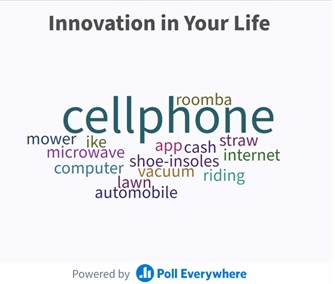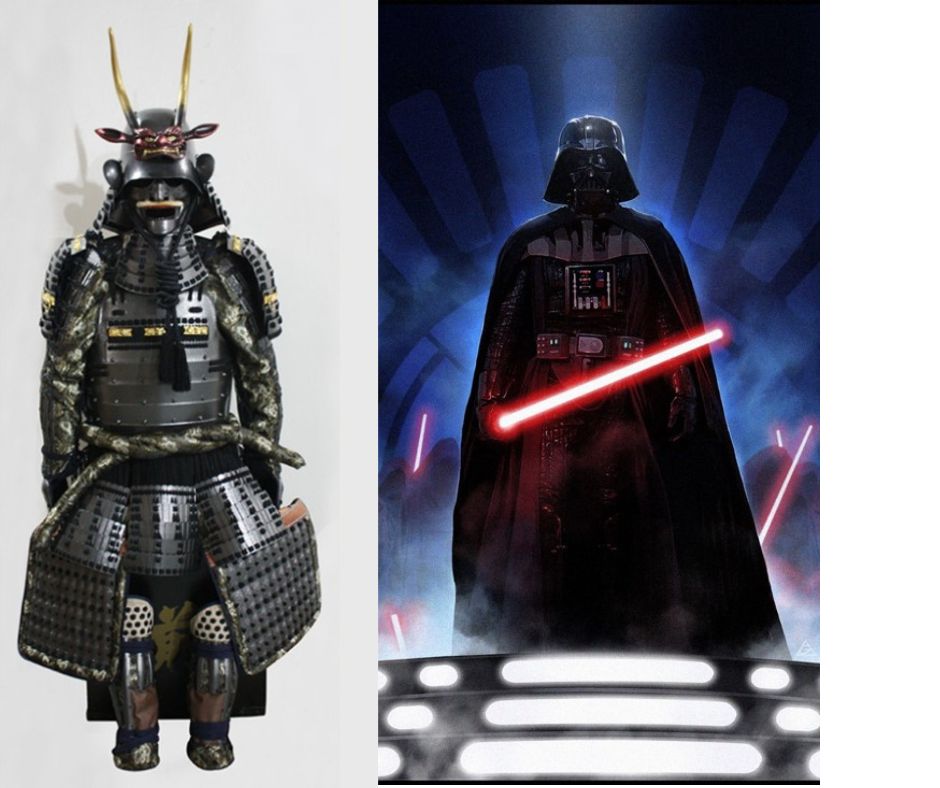Posts
Contact
Lisa Davis
Program Associate-Leadership
Phone: 501-519-5472
Email: ldavis@uada.edu
University of Arkansas System Division of Agriculture
Cooperative Extension Service
2301 S. University Avenue
Little Rock, AR 72204
Innovation Focus of Leadership Lunch and Learn
From samurai warriors to Darth Vader, from Slick Rick to Miley Cyrus, the October
session of Leadership Lunch and Learn focused on innovation.
Taylor Knox, ExCEL program coordinator, provided information and tips regarding the importance of creativity and how to increase opportunities to innovate.
Innovation is defined as
- A new idea, method, or device;
- The introduction of something new.
When is innovation needed? Is it needed to improve a process? Is it needed to fix a problem or avoid a problem?
Looking through the positive lens of innovation, Knox asked the audience to think about an innovation that made their lifes easier. Participants responded to his question using a polling software that created a word cloud. Their responses varied from roombas to riding lawnmowers and cell phones.

He then shared tips and tricks to increase opportunities to innovate. Those tips included:
1. Know yourself. To be a better innovator it’s important to think about what makes you tick. Do you prefer to be creative solo or in a group? Environment design such as open office space or rooms with doors paints a different picture. It shows our choices and preferences can be crafted by the environment around us. Suddenly, it becomes apparent that we don’t need to be motivated or incentivized to act — we simply need to be surrounded by the right cues.
2. Know your team. Knox shared how employees at Google spend 20% of their time on innovation. He recalled how Google founders Segrey Brin and Larry Page wrote in their IPO letter, “We encourage our employees, in addition to their regular projects, to spend 20 percent of their time working on what they think will most benefit Google.” This time allowed for the creation of Gmail and Adsense, Knox said.
Knox asked about autonomy. Are we giving any type of choice to our work? Are we telling
people what to do versus letting people do it their way. Is there any room left to
be creative? If, we are filling 100% of our time with things to do, then it’s going
to be impossible to innovate.
In the book Drive, Daniel Pink wrote how innovation doesn’t always mean new products. It can be a new
way to look at old problems. As an example, Starbucks employees had the ability to
choose where certain equipment was located based on their experience working in their
store front. When we decided how people do their work then we could be stripping away
the ability to be innovative by the people that have the most experience, Knox said.
Innovation doesn’t always have to be revolutionary. Small changes over time can lead
to big results.
3. Loosen up. Do we have to be completely original? Nothing is completely original. Don’t get caught up in this. Knox told the group to look at Star Wars as an example.

“If I were to ask you to think about space and this armor what thoughts might that inspire? How about a very original movie for its time in 1977. Darth Vader’s suit, while original, was built off samurai armor,” Knox said.
“Also, King Arthur, his character development through bloodline to having a guide (Merlin) resembles our classic hero in Star Wars —Luke Skywalker. What about Tatooine? The birthplace of Luke. A desert desolate planet with criminals and war lords running amok. How about a now famous movie Dune. Dune is set in a world called Arrakis that is harsh, where water is slim and life struggles.”
He also shared musical clips from Slick Rick, Beastie Boys, Biggie Smalls, and Miley Cyrus and demonstrated how all used some of the same musicality in different ways.
4. Tips/Tricks. Knox provided these general techniques on how to be more innovative.
Fuel Vs. Friction
One can use fuel or friction to innovate. Knox said instead of adding fuel, try removing friction. He said you can innovate by doing less — addition by subtraction.
Fuel. Adding “fuel” to solve a problem. For example, adding black powder to a gun to make a bullet go further.
Friction. Finding where “friction” happens in our processes and removing or reducing the friction. For example, changing the shape of the bullet, reducing friction within the barrel of the gun, etc.
Or Friction can be experienced due to inertia. “That’s how we have always done it.” He said friction due to inertia is hard to break. Maybe it has be done this way for a reason, but I think if we are going to be innovative, we need to be willing to question why we do certain things. I also think people are more willing to “buy in” when we know the why behind decisions.
In addition, there is emotional friction, which is friction due to emotional insecurities, identity bias, etc. He said emotional Friction is ego, ego, ego.
Knox said he sees a lot of innovation at his job within group settings, but the most important part is how the message is delivered and how the group receives ideas. Innovation that leads or requires change can be difficult. People hold onto ideas and habits often due to comfort, identity, and ego.
Here are some tidbits as you think about delivery.
- “Approach disagreements as dances, not battles.” – Adam Grant, Think Again
- What evidence would change your mind?
- Realize that there could and should be conflict. Disagreements are not battles or wars. They are dances that both parties are figuring out. Adam Grant asks how you know when you are a part of a psychologically safe group. When you can have discourse and it is not personal.
- “Less conflict is better.” When we don’t have conflict in teams, we may lose out on valuable insights/ideas/innovation. “The absence of conflict is not harmony, its apathy.” – Adam Grant
- Express ideas/opinions with humility. “Communicating with some uncertainty signals confident humility, invites curiosity, and leads to a more nuanced discussion.” – Adam Grant
- Lead with a question not a demand.
- Express ideas/opinions with humility.
- “Communicating with some uncertainty signals confident humility, invites curiosity, and leads to a more nuanced discussion.” – Adam Grant
- Research shows that in a courtroom expert witnesses and deliberating jurors are more credible and more persuasive when they express moderate confidence, rather than high or low confidence.
- Anecdotal experience – When group members make recommendations or throw out ideas. Ideas that are posed with “Hey, what if we try xyz?” tend to be accepted and willing to try versus let’s do xyz!” Some of the best ideas of how to solve problems have been irrupted, not tried, or even told are stupid because of how the ideas were delivered.
- Tone and body language matter.
- One great question. Are you open to xyz?
- Find common ground.
- “Admitting points of convergence does not make you weaker, it shows that you’re willing to negotiate about what’s true.” – The Human Element: Overcoming the Resistance That Awaits, Loran Nordgen
- Begin at positions of alignment.
Watch October's Leadership Lunch and Learn
Register for November
The next session of Leadership Lunch and Learn will be on Crucial Conversations, at 12:15 p.m. on Nov. 30. Lisa Davis, a program associate in leadership, will lead the conversation.